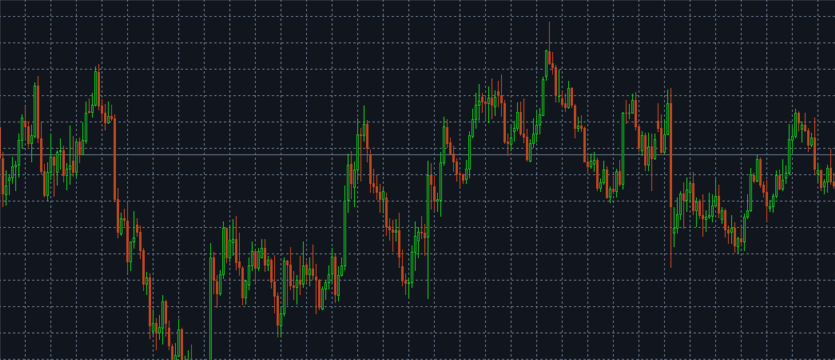The US dollar had a rough back-to-school week, but it made a comeback later on. Inflation data in the UK and the US, GDP data in New Zealand; rate decisions in the UK and employment data in the UK and Australia stand out. These are the top events on FX calendar. Here is an outlook on the market-movers coming our way.
The U.S. services sector activity index plunged to a 6-1/2-year low of 51.4 in August from 55.5 in the previous month as production and orders slowed sharply, pointing to a weaker economic growth. Following this report, policy officials voiced their concerns over the third quarter growth prospects. However later in the week, unemployment claims continued to demonstrate strength in the US the employment market with a 4,000 drop to 259,000 new claims and Crude Oil Inventories recorded a big draw of 14,500 million barrels from stock, although the fall was mainly attributed to Hurricane Hermine.
- UK Inflation data: Tuesday, 8:30. UK inflation ticked up more than expected in July, rising by an annual rate of 0.6% compared to 0.5% posted in the previous month. Rising fuel costs, alcoholic drinks, hotel room prices as well as sterling depreciation helped this increase. The Sterling’s decline caused fuel prices to rise by 0.7% month-to-month. Economists expect this will boost inflation to 3% in the second half of 2017. But even if inflation rises above the government’s 2% target, the Bank of England is still likely to lower interest rates further to stimulate growth. Economists expect CPI to rise further to 0.7% this time.
- German ZEW Economic Sentiment: Tuesday, 9:00. German economic sentiment rebounded less than expected in August after plunging to a four-year low of minus 6.8 in July. Economists expected the index to register 2.1 points in August. The Current Conditions Index edged up to 57.6 from 49.8 in July, beating forecasts for an increase to 50.0. The report also showed that political risks both in and outside of Europe prevented a more optimistic outlook for Germany. Economic sentiment is expected to rise again to 2.8% in September.
- UK Employment data: Wednesday, 8:30. The number of UK job seekers declined unexpectedly by 8,600 in July, despite fears that the Brexit vote would increase job losses. Economists expected a 5,200 rise in the number of unemployed. The unemployment rate remained steady at 4.9% and average weekly earnings excluding bonuses rose 2.3% over the same period, up from 2.2%. There are concerns of cutbacks and a freeze on hiring following the Brexit vote which would worsen the state of UK’s employment market in the coming year. The number of unemployed is expected to increase by 1,700 in August.
- US Crude Oil Inventories: Wednesday, 14:30. Crude oil prices edged up after a sharp stock decline of 14.5 million barrels. This was the largest drop since 1999. Gasoline stocks fell by 4.2 million bpd, also beating forecast. Economists believe this was a one-time events caused by Hurricane Hermine which prevented ships docking in the Gulf of Mexico. This plunge in imports was the main reason for the oil inventories contraction.
- NZ GDP: Wednesday, 22:45. New Zealand’s economic growth in the first quarter exceeded forecasts, rising 0.7% in the first three months. The reading was lower compared to 0.9% expansion rate registered in the last quarter of 2015. The Reserve Bank of New Zealand expects an annual GDP growth average of around 3% over the next two years. The expansion was softened by weakness in primary industries and manufacturing, while the main force of growth was construction. GDP growth in the second quarter is estimated at 1.1%.
- Australian employment data: Thursday, 1:30. The Australian job market added 26,200 new jobs in July. This was better than expected reading reduced the unemployment rate to 5.7% from 5.8% posted in June. Analysts expected a smaller jobs gain of 10,200. However, the data is not all positive since the majority of jobs were part-time employment, while full-time jobs fell. Part-time employment edged up 71,600, while full-time workers declined by 45,400. This trend existed over the past six months. Australia has ‘third highest’ part-time employment rate in OECD, but this fact is not likely to effect the RBA’s economic and interest rate outlook. Analysts expect a job gain of 15,200 jobs in August, while the unemployment rate is expected to remain at 5.7%.
- UK rate decision: Thursday, 11:00. The Bank of England decided to act in July as policymakers voted unanimously to cut rates to 0.25%, marking the first rate cut in seven years. Furthermore, the central bank unveiled a four-step stimulus package designed to boost the economy and prevent a recession following the Brexit vote. Policy officials also noted that further cuts towards zero might follow in the coming months. The £170bn package of additional measures would enable the expansion of the quantitative easing program by £60bn, reaching a total of £435bn over the coming six months, from the current £375bn. The bank is confident this move will reduce unemployment and improve the economic growth in the UK.
- US Retail Sales: Thursday, 12:30. U.S. retail sales were flat in July, compared to a 0.8% rise in the previous month, as sales at retailers and restaurants remained steady at a seasonally adjusted $457.73. Consumer spending remained lukewarm despite the continuous growth in the labor market and the rise in wages. Meanwhile, core sales excluding autos fell 0.3%. Consumers bought less sporting-goods stores, food and beverage stores, restaurants and bars, building-material suppliers, electronics outlets and other categories in July. Retail sales are expected to decline by 0.1% in August, while the core sales are expected to rise by 0.3%.
- US PPI: Thursday, 12:30. U.S. producer prices fell unexpectedly in July as services and energy products costs declined, indicating lukewarm inflation environment. This subdued inflation trend will make it hard for the Fed to raise interest rates in the coming months. Producer prices decreased by 0.4% compared to a 0.5% rise in June. This was the largest decline since September 2015. On a yearly base, PPI dropped 0.2% after gaining 0.3% in June. A high dollar and lower oil process will continue to keep price pressures muted, leaving inflation running persistently below the Fed’s 2% target.0.1%
- US Philly Fed Manufacturing Index: Thursday, 12:30. Manufacturing activity in the Philadelphia area rebounded in August, rising to 2.0 from minus 2.9 in July. The reading was broadly in line with market forecast pf a 1.4 increase. The index turned positive only three times this year, and the current rise showed mixed data. The employment and new orders indexes showed continued weakness. Responders’ median forecast for price increases was 1% and 2.5% for inflation over the next ten years. Philly Manufacturing activity index is expected to reach 1.1 in September.
- US: Unemployment claims: Thursday, 12:30. The number of Americans filing new applications for unemployment benefits fell unexpectedly by 4000 claims last week, reaching 259,000 new claims. Economists expected a reading of 264,000. However, the weak monthly job gain recorded in August may still deter rate hike plans in the next Fed meeting in September. The number of claims remained below the 300,000 for the 79th straight week, the largest stretch since 1970. The four-week moving average of claims fell 1,750 to 261,250 last week. The number of new claims is expected to reach 262,000 this week.
- US Inflation data: Friday, 12:30. U.S. consumer prices remained flat in July as fuel prices fell for the first time in five months and inflation pressures moderated. The reading was in line with market forecast. This was the weakest reading since February and followed two straight monthly increases of 0.2%. In the 12 months through July, the CPI gained 0.8% after rising 1.0% in June. Meanwhile, core CPI, excluding food and energy costs, edged up 0.1% in July, missing predictions for a 0.2% rise and following a 0.2% increase in the previous month. Inflation remained stuck at 1.6% since March, and the weak retail sales figures further confirm this downtrend. CPI is expected to rise by 0.1% in August, while core CPI is estimated to gain 0.2%.
- US UoM Consumer Sentiment: Friday, 14:00. U.S. consumer sentiment increased in early August to 90.4 from 90 in July, amid stronger economic data.This was the first rise since May, but the reading was lower than the 91.5 forecast. Consumers were more positive on prospects for the overall economy while were less so regarding personal finances. Most of the weakness in personal finances was among younger households who cited higher expenses lower income gains. Consumer sentiment is expected to improve slightly to 91 in August.
That’s it for the major events this week. Stay tuned for coverage on specific currencies
*All times are GMT



